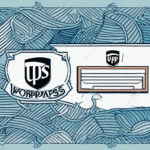Optimizing Your Shipping Processes with UPS WorldShip and ECCN Compliance
Streamlining your business's shipping operations while ensuring compliance with international trade regulations can significantly enhance efficiency and reduce risks. Leveraging tools like UPS WorldShip in conjunction with understanding Export Control Classification Numbers (ECCN) can help achieve these goals. This guide provides comprehensive insights and actionable strategies to help you navigate and optimize these systems effectively.
Understanding UPS WorldShip and ECCN
What is UPS WorldShip?
UPS WorldShip is a robust shipping software designed to automate and manage your shipping processes. Key features include:
- Address Validation: Ensures accurate shipping information to prevent delays.
- Rate Shopping: Compares shipping rates to find the most cost-effective options.
- Package Tracking: Provides real-time tracking updates for shipments.
- Reporting: Generates detailed reports to analyze shipping performance.
By integrating with other business systems such as accounting and CRM tools, UPS WorldShip can further streamline your operations by automatically importing customer and order data.
What is ECCN?
Export Control Classification Number (ECCN) is a five-character alphanumeric code used by the U.S. Department of Commerce to categorize and regulate the export of sensitive goods, technology, and software. Understanding ECCN is crucial for businesses involved in international trade to ensure compliance with export regulations and avoid legal penalties.
Setting Up UPS WorldShip for Your Business
Installation and Configuration
To get started with UPS WorldShip:
- Download the software from the official UPS WorldShip website.
- Register or log in to your UPS account.
- Configure shipping preferences, including default shipping options and user permissions.
Carefully following each installation step and utilizing UPS's comprehensive support resources can facilitate a smooth setup process.
Integrating with Other Systems
UPS WorldShip's ability to integrate with accounting and inventory management systems can automate data flow, reducing manual entry errors and saving time. Ensure compatibility and follow proper setup procedures to maximize the benefits of integration.
Mastering the UPS WorldShip Interface
Key Features
- Shipment History: Easily track and review past shipments.
- Shipping Editor: Customize package details and shipping options.
- Data Import/Export: Streamline data management by importing from or exporting to other applications.
Utilizing Reporting Tools
UPS WorldShip offers various reporting options, including shipment summaries and invoice reports. These tools help businesses monitor shipping expenses, analyze patterns, and make informed decisions to optimize shipping strategies.
Ensuring ECCN Compliance
Determining Your Product's ECCN
Classifying your products accurately under the correct ECCN is essential. This involves analyzing technical specifications, intended use, and destination. Resources such as the Bureau of Industry and Security (BIS) ECCN Classification can aid in this process.
Avoiding Common Classification Mistakes
- Misinterpreting Technical Details: Ensure thorough understanding of product specifications.
- Ignoring End-Use and End-User: Consider the final application and user of the product.
- Relying Solely on Product Name: Focus on technical characteristics rather than just the name.
Consulting with export compliance experts or legal advisors can help mitigate these risks.
Best Practices for International Trade Compliance
Maintaining Accurate Records
Keeping detailed records of all shipments, including ECCN classifications and related documentation, is vital for compliance and auditing purposes.
Conducting Regular Compliance Audits
Periodic audits help identify and rectify compliance gaps, ensuring ongoing adherence to export regulations.
Employee Training and Education
Investing in training programs for employees involved in shipping and export tasks ensures they are knowledgeable about compliance requirements and best practices.
Exploring Alternatives to UPS WorldShip
While UPS WorldShip offers comprehensive shipping management solutions, businesses may consider other options based on their specific needs:
- FedEx Ship Manager - Ideal for businesses heavily reliant on FedEx services.
- ShipStation - A versatile platform suitable for e-commerce businesses requiring integrations with multiple carriers.
- EasyPost - Offers developer-friendly APIs for custom shipping solutions.
Assess your business’s unique requirements and compare features to choose the most suitable shipping software.
Staying Updated with Regulatory Changes
International trade regulations, including ECCN classifications, can evolve due to technological advancements and geopolitical shifts. To stay compliant:
- Monitor updates from the Bureau of Industry and Security (BIS).
- Engage with industry associations and subscribe to relevant newsletters.
- Consult with legal experts specializing in international trade compliance.
The Advantages of Leveraging UPS WorldShip and ECCN Compliance
Implementing UPS WorldShip alongside a thorough understanding of ECCN can offer numerous benefits:
- Increased Efficiency: Automate and streamline shipping processes to save time and reduce errors.
- Cost Savings: Optimize shipping rates and minimize compliance-related penalties.
- Regulatory Compliance: Ensure adherence to international trade laws, safeguarding your business from legal risks.
- Enhanced Data Insights: Utilize reporting tools to analyze shipping performance and make informed strategic decisions.
By integrating these technologies and practices, businesses can focus on growth and delivering exceptional customer experiences.
Getting Support and Resources
UPS Customer Service
For assistance with UPS WorldShip and ECCN-related queries, contact UPS Customer Service via phone, email, or live chat. Having relevant information like tracking numbers and ECCN classifications ready can expedite support.
Educational Resources
Access valuable resources on the UPS website, including video tutorials, user guides, and FAQs. Additionally, consider enrolling in training sessions and webinars to deepen your understanding and proficiency.






















